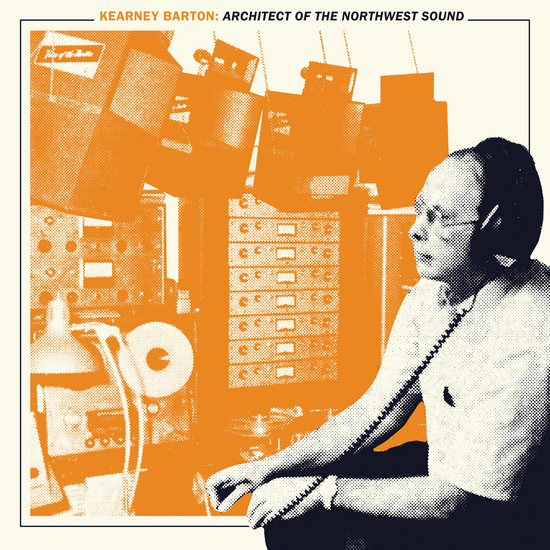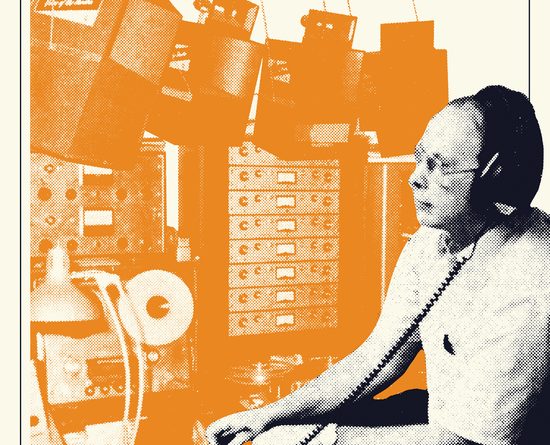Review: Kearney Barton — ‘Architect of the Northwest Sound’

Kearney Barton’s analog recording prowess and wizardry acumen across vintage processes is well storied within the Emerald City and the surrounding hub. Light In The Attic’s newest and earnest compilation, Architect of the Northwest Sound, aims to spread Barton’s impact nationally.
Many of the 29 tracks resonate more curio dig than carousing mix tape, illuminating Barton’s work and ethos as sound engineer. Selected from over 5,000 hours of stashed tapes from decade’s worth of studio sessions, Architect is less about assembling the ‘hits’, and more about establishing Barton’s narrative through reel-to-reel recordings and his knack for embracing so many sounds and styles so well.
Side A’s stellar strides splash and roll from the enchanted forlorn “Hey Little One” by Woody Carr & the Entertainers and follow up, Ann Wilson & The Daybreaks’ “Looking Through Eyes Of Glass”. Barton captures both as quintessential, late night soul. The jittery, staccato driven hip scene smasher, “Occupation Soul” (by a band with the same name) bares Barton’s grimy, down low proclivity for intricate drum patterns and fills thus displaying a master and his craft.
Because Architect flows more unified as a collection of found sounds, one-offs, with a flash of crate digger appeal, many tracks exist separate from style but unify around era. “Flying Bird” by Tropical Rainstorm comes to mind as does Prabha Devi’s tabla and sitar centric, “Spanish Harlem”. Barton maneuvers more as a conduit than simply a collector of diversified instrumentations. “Qui El Petit”, a sonorous vocal shower of language and syllabic nursery pace, may not snap into Barton’s future penchant for recording garage rock, but his absorbing take reflects his abilities to capture crisp vocal arrays on this 1961 Wilkins’ tune. Later, previously unreleased “Blind Love” by The Cuidads, twirls on an island of dated colors, buzzing with Barton’s chronicling as life affirming as any of his chart toppers.
Perhaps the most notable included on Architect are two tracks from The Sonics and The Wailers. “He’s Waitin’,” by The Sonics is crisp, pell-mell gruff and beast vocal shrills stitched of the highest fabric. The Wailers’ “All My Nights, All My Days” is gorgeously heady doo-wop infused unclouded pop, with Barton’s steady rock tag pulse peaking through. Yet it’s Barton’s handle of late 60’s psych and pop blown folk reinforcing Architect. Sweet Rolle’s copper crusted “Everybody Knows” is what Moby Grape would’ve sounded like if stationed in the Pacific Northwest. “Wrong Age” by MUF is a Cream rock along and the paisley-patterned and harmonious honeyed “Gold + Mellow” by Fox-Brownsmith is CSNY era Déjà Vu. Love’s doppelganger, “High Flyer” by Magic Fern, peaks soulful psychedelic streaks in a masterly condensed 90 seconds.
It’s a lofty title, something Barton himself considered before his 2012 passing, but it wasn’t an ego-derived fixation for Barton. He’d record just about anyone, and in the process covered a gamut rooted less in rock or soul and more in quality control. How, what, and proximity to microphones were far more critical quests for Barton.
Consider Keith Kessler’s shaken approach on “Sunshine Morning”. Part The Moody Blues and The Turtles, Barton’s clean take of lead vocals, harmonies, and sweeping instrumentations is punctual. But the chimes, harpsichord-like keys, and lift-off-drums easily could’ve sounded like a blurred, confounding blob. Even the glittery carousel of “Don’t Ask Me” by Tiki & The Fabulous is stuffed tight with shattering solos of sax and guitar, nevertheless arranged like a Motown hit as vocals color the nooks and crannies with bittersweet serenades worthy of repeats.
In fitting fashion, “Mr. Blue” originally recorded by The Fleetwoods in 1959 and landing #1 on Billboard is included here by the Fury Four (vocalists unknown). This exquisite version twangs like a drizzly ballroom confessional, extracted larger by Barton’s mining string section, sinewy bass notes, and staggered vocal harmonies.
Barton’s hunger to record a diverse cast of musicians, instruments, and arrangements was tremendous and five decades vast. The cuts offered on Architect of the Northwest Sound reveal Barton’s touch and attention to craftsmanship. This comp proves to be something of a primer. Endearing layout, inviting photos, inquiring liner notes strike noteworthy from beginning to end. Wanting to research a little deeper is simply an extension of the Barton legacy.
(Check out the album at Light In The Attic’s website HERE.)

